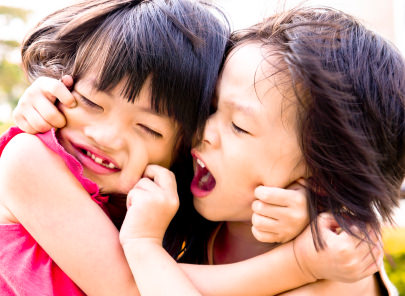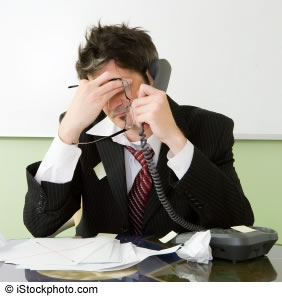 “It’s not fair!” “ “You’re not the boss of me.” “She hit me!” “He started it.”
“It’s not fair!” “ “You’re not the boss of me.” “She hit me!” “He started it.”
Fights between siblings – from toy-snatching to clandestine whacks to being banished from the bedroom – are so common they’re often dismissed as simply part of growing up. Yet a new study from researchers at the University of New Hampshire finds that sibling aggression is associated with significantly worse mental health in children and adolescents. In some cases, effects of sibling aggression on mental health were the same as those of peer aggression.
“Even kids who reported just one instance had more mental health distress,” says Corinna Jenkins Tucker, associate professor of family studies at UNH and lead author of the research, published in the July issue of the journal Pediatrics. “Our study shows that sibling aggression is not benign for children and adolescents, regardless of how severe or frequent.”
The study, among the first to look at sibling aggression across a wide age and geographic range, is unique in its size and scope. Tucker and her co-authors from UNH’s Crimes against Children Research Center – center director and professor of sociology David Finkelhor, professor of sociology Heather Turner, and researcher Anne Shattuck – analyzed data from the center’s National Survey of Children’s Exposure to Violence (NatSCEV), a national sample of 3,599 children, ages one month through 17.
The study looked at the effects of physical assault with and without a weapon or injury, property aggression like stealing something or breaking a siblings’ things on purpose, and psychological aggression such as saying things that made a sibling feel bad, scared, or not wanted around.
The researchers found that of the 32 percent of children who reported experiencing one type of sibling victimization in the past year, mental health distress was greater for children (1 month to age 9) than for adolescents (age 10 – 17) who experienced mild sibling physical assault, but children and adolescents were similarly affected by other psychological or property aggression from siblings.
Their analyses also showed that, while peer aggression like bullying is generally thought to be more serious than sibling aggression, sibling and peer physical and psychological aggression had independent effects on mental health. The mental health of those experiencing property and psychological aggression, whether from siblings or peers, did not differ.
An important implication of this research, Tucker says, is that parents and caregivers should take sibling aggression seriously. “If siblings hit each other, there’s a much different reaction than if that happened between peers,” she says. ”It’s often dismissed, seen as something that’s normal or harmless. Some parents even think it’s beneficial, as good training for dealing with conflict and aggression in other relationships.” This research indicates that sibling aggression is related to the same serious mental health effects as peer bullying.
The authors suggest that pediatricians take a role in disseminating this information to parents at office visits, and that parent education programs include a greater emphasis on sibling aggression and approaches to mediate sibling conflicts.
The study, “Association of sibling aggression with child and adolescent mental health,” appears in the July 2013 issue of the journal Pediatrics (http://pediatrics.aappublications.org/content/early/2013/06/12/peds.2012-3801). It was supported by funding from the U.S. Department of Justice and the Centers for Disease Control & Prevention.
ᔥ University of New Hampshire

 “It’s not fair!” “ “You’re not the boss of me.” “She hit me!” “He started it.”
“It’s not fair!” “ “You’re not the boss of me.” “She hit me!” “He started it.”
